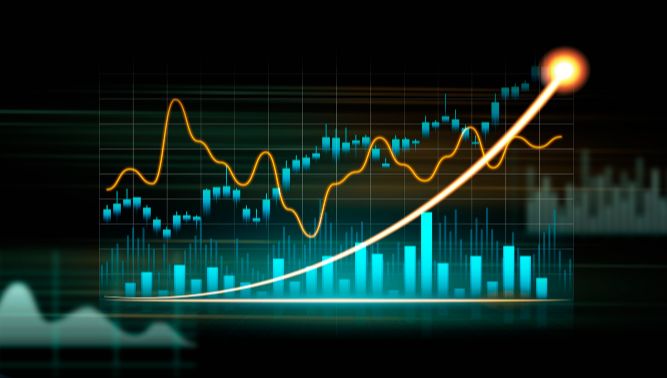John Ragard, Senior Portfolio Manager, Small Cap Growth
April 6, 2022
We’ve certainly experienced a host of major concerns over the past few months that have caused the markets to decline and become more volatile. Among continued supply chain issues, surging inflation, lingering coronavirus anxiety and now the war in Ukraine, the S&P 500 Index (S&P 500) experienced a peak to trough decline of 13% from early January through mid-March. The small company index followed by most observers, the Russell 2000 Index, declined a more severe 21% over a slightly different time period. Both indices have subsequently rebounded 8-9% at the end of the first quarter, providing some relief to equity investors and raising the argument that the worst is over. Not to be left out, the bond markets have also been punished with the concern that the Federal Reserve will aggressively tighten monetary policy throughout the year. Bloomberg, a good representation of consensus, now forecasts 7-8 rate hikes during the year, a number that is mostly factored into expectations. TLT, the ETF representing long-term treasury holdings, has declined about 16% from peak to trough, with virtually no rebound, making this one of the most severe bond market declines in decades.
There are plenty of reasons to be worried. Interest rates are rising. The yield curve has flattened, portending a potential recession. We haven’t experienced inflation like this in 40 years, dating back to the 1970s. Certainly, the Russian invasion of Ukraine has created new problems and exacerbated others. Millions of Ukrainians have been displaced into neighboring countries causing a humanitarian disaster in Europe. Global trade has been disrupted, unlike anything we’ve seen in our lifetimes, creating serious concerns over the cost of transportation fuels and the overall availability of food for residents of many countries that import Russian and Ukrainian grains. The Ukrainian agriculture agency’s current forecast is that only half of the normal acreage will be planted this spring. Many countries have suspended food exports to assure their own citizens’ well-being.
With all these issues, it is understandable that the financial markets have experienced disruption. After all, markets have always been driven to an extent, especially over short periods of time, by fear and greed. However, let’s look at some historical data representing previous challenging periods. A recent piece penned by Joseph Amato at Neuberger Berman looks back at the market impact of other major geopolitical events to give us perspective.
During the Cuban Missile Crisis, the market declined 7% more (it was in a major correction prior to the crisis), bottoming one week after the crisis was made public, then rose 14% over the ensuing three months. The 9/11 attack that destroyed the World Trade Center caused a 12% drop, yet prices recovered within a month. A very similar outcome occurred with the beginning of the Korean War. The US invasion of Iraq actually coincided with a 2% increase in the market, and by year-end, it was 30% higher. Even in the case of the Japanese attack on Pearl Harbor, an event causing a longer-lasting decline, the market erased that decline within a year. Not all events worked out in the positive dimension. The 1973 Arab-Israeli war saw its initial decline erased within a week, though the market then reversed and plunged 40% caused in a meaningful way by the subsequent oil embargo and the recession that event caused.
Let’s look at history in a different dimension. Long time market strategist Tony Dwyer of Canacord Genuity examined historical periods of stock market behavior after a significant four consecutive day increase of the S&P 500, one that reversed a downward trend like we’ve recently experienced. He studied all market periods since 1957 where there was a so-called four-day upward thrust move that was either the same or greater in magnitude than the 6.95% increase we experienced in mid-March (there were 16 of these events in those 64 years). Subsequent to the thrust, the median move in the market a year later saw an increase of 23%. Only one of those events was followed by a market decline a year later – the March 2000 event.
One last look at history is in order. What if the current Federal Reserve chair Jay Powell follows his predecessor Paul Volcker in his historic attack on subduing inflation? On October 6, 1979, Volcker began the process of driving interest rates substantially higher in a successful effort to lower inflation. By April 1, roughly six months later, his efforts had brought the market down roughly 5%. Yet by the end of 1980, the market had more than recovered and was up a whopping 29%. Volcker continued his tightening process unabated however and finally brought the economy into recession in 1982, causing an 18% market drop in the process. Despite this decline, the market was still essentially where it had been when he started the rate tightening march about three years prior. That bottom in 1982 marked the low point from which stocks recorded a gigantic run until the dot-com bust in 2000.
So, what does history teach us? Hopefully not what Michael Lewis famously said in his book Liar’s Poker “The only thing history teaches us, a wise man once said, is that history doesn’t teach us anything”. Certainly, history is not exactly repetitive, but it forms patterns that are the representation of human behavior. Looking back gives us a less biased way to frame the environment we live in. In the world in which we find ourselves today, having some historical perspective is helpful.
There are plenty of reasons to be concerned today, yet we’ve also previously experienced times to feel that same way. My biggest concern regarding stocks today is the potential for a meaningful recession and the concomitant effect it would have on corporate profitability. That, in the long run, is what drives equity valuations. It is something we will be watching closely as the tightening process continues. But, looking back on the Paul Volcker era as the worst of the many scenarios we face, then the outlook for stocks may not be so bad after all.
The views expressed are those of Spouting Rock Asset Management as of April 1, 2022, and are not intended as investment advice or recommendation. For informational purposes only. Investments are subject to market risk, including the loss of principal. Past performance does not guarantee future results. There can be no assurances that any of the trends described will continue or will not reverse. Past events and trends do not imply, predict or guarantee, and are not necessarily indicative of future events or results. Investors cannot invest directly in an index.





